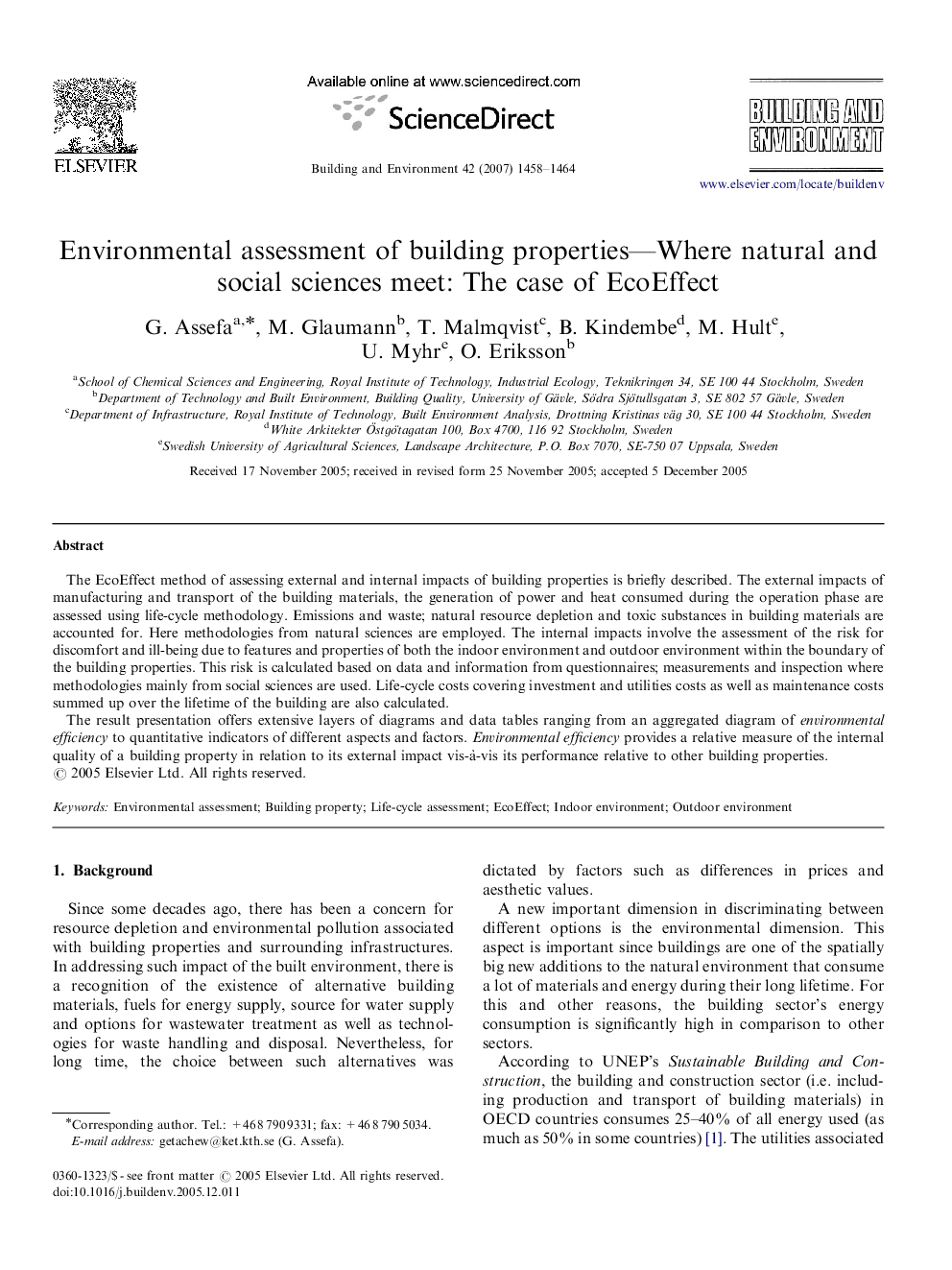| Article ID | Journal | Published Year | Pages | File Type |
|---|---|---|---|---|
| 250073 | Building and Environment | 2007 | 7 Pages |
The EcoEffect method of assessing external and internal impacts of building properties is briefly described. The external impacts of manufacturing and transport of the building materials, the generation of power and heat consumed during the operation phase are assessed using life-cycle methodology. Emissions and waste; natural resource depletion and toxic substances in building materials are accounted for. Here methodologies from natural sciences are employed. The internal impacts involve the assessment of the risk for discomfort and ill-being due to features and properties of both the indoor environment and outdoor environment within the boundary of the building properties. This risk is calculated based on data and information from questionnaires; measurements and inspection where methodologies mainly from social sciences are used. Life-cycle costs covering investment and utilities costs as well as maintenance costs summed up over the lifetime of the building are also calculated.The result presentation offers extensive layers of diagrams and data tables ranging from an aggregated diagram of environmental efficiency to quantitative indicators of different aspects and factors. Environmental efficiency provides a relative measure of the internal quality of a building property in relation to its external impact vis-à-vis its performance relative to other building properties.
